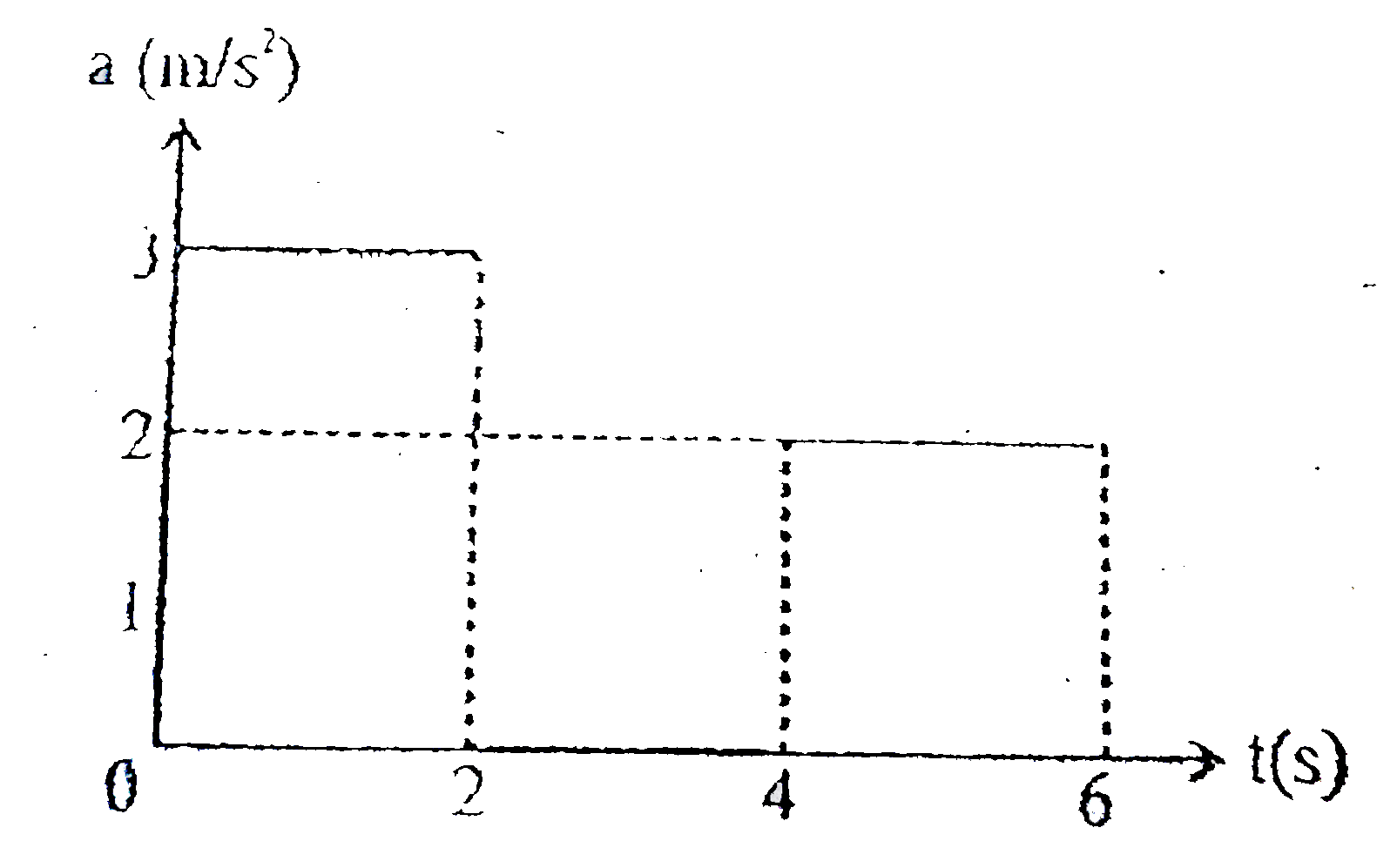At t=0, a body starts from origin with some initial velocity. The displacement x(m) of the body varies with time t(s) as x=−(2/3)t2+16t+2. Find the initial velocity of the body and also find how long does the body take to come to rest? What is the acceleration of the body when it comes to rest?
To solve the problem step by step, we will follow the given equation of motion and apply the necessary physics concepts.
Given:
The displacement of the body is given by the equation:
x(t)=−23t2+16t+2
Step 1: Find the initial velocity
The initial velocity can be found by calculating the velocity at t=0.
The velocity v(t) is the derivative of the displacement x(t) with respect to time t:
v(t)=dxdt
Differentiating x(t):
v(t)=ddt(−23t2+16t+2)
v(t)=−43t+16
Now, substituting t=0 to find the initial velocity v(0):
v(0)=−43(0)+16=16m/s
Step 2: Find the time when the body comes to rest
The body comes to rest when the velocity v(t) is equal to zero:
0=−43t+16
Solving for t:
43t=16
t=16⋅34=12s
Step 3: Find the acceleration when the body comes to rest
Acceleration a(t) is the derivative of the velocity v(t):
a(t)=dvdt
Differentiating v(t):
a(t)=ddt(−43t+16)
a(t)=−43m/s2
Summary of Results
1. Initial Velocity: 16m/s
2. Time to come to rest: 12s
3. Acceleration when at rest: −43m/s2
The displacement of the body is given by the equation:
x(t)=−23t2+16t+2
The initial velocity can be found by calculating the velocity at t=0.
v(t)=dxdt
v(t)=ddt(−23t2+16t+2)
v(t)=−43t+16
v(0)=−43(0)+16=16m/s
The body comes to rest when the velocity v(t) is equal to zero:
0=−43t+16
43t=16
t=16⋅34=12s
Acceleration a(t) is the derivative of the velocity v(t):
a(t)=dvdt
a(t)=ddt(−43t+16)
a(t)=−43m/s2
1. Initial Velocity: 16m/s
2. Time to come to rest: 12s
3. Acceleration when at rest: −43m/s2
Topper's Solved these Questions
- BOOK - CENGAGE PHYSICS ENGLISHCHAPTER - BASIC MATHEMATICSEXERCISE - Solved Examples9videos
BASIC MATHEMATICS
- BOOK - CENGAGE PHYSICS ENGLISHCHAPTER - BASIC MATHEMATICSEXERCISE - Exercise 2.12videos
BASIC MATHEMATICS
- BOOK - CENGAGE PHYSICS ENGLISHCHAPTER - ARCHIVES 2 VOLUME 6EXERCISE - Integer4videos
ARCHIVES 2 VOLUME 6
- BOOK - CENGAGE PHYSICS ENGLISHCHAPTER - CALORIMETRYEXERCISE - Solved Example13videos
CALORIMETRY
Similar Questions
The displacement of a body at any time t after starting is given by s=15t−0.4t2. Find the time when the velocity of the body will be 7ms−1.
View SolutionThe displacement of a body is given by s=12gt2 where g is acceleration due to gravity. The velocity of the body at any time t is
View SolutionThe displace ment of a body at any time t after starting is given by s=10t−12(0.2)t2. The velocity of the body is zero after:
View SolutionThe acceleration of paticle varies with time as :
a(t)=3t2+4
If the initial velocity of particle is 2m/s, find the velocity of particle at t=3sec.View SolutionThe displacement of a body along X-axis depends on time as √x=t+1. Then the velocity of body.
View SolutionThe displacement of a body of mass 2kg varies with time t as S=t2+2t, where S is in seconds. The work done by all the forces acting on the body during the time interval t=2s to t=4s is
View SolutionThe angular displacement of a body is given by θ=2t2+5t−3. Find the value of the angular velocity and angular acceleration when t = 2s.
View SolutionThe dependence of the acceleration of a body with time is shown in Figure. At t=0, the velocity of the body is −3m/s and position is x=0m.
 View Solution
View SolutionThe position of a body moving along x-axis at time t is given by x=(t2−4t+6)m. The velocity of the body at time t = 3s is
View SolutionA body of mas m starts from rest with a constant power. If velocity of the body at displacement s is v, then the correct alternative is
View Solution

